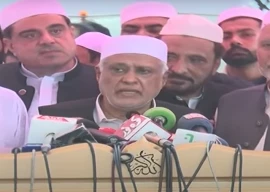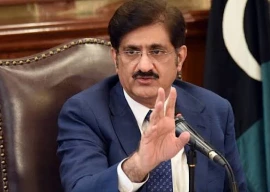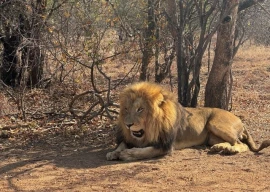
Over the course of five years, we have risen above these demons with grace and honesty. The Life & Style pages of The Express Tribune have not only made their mark as a credible source of local and international news but also a benchmark for quality arts and culture writing.
Our reporters started as complete nobodies and yet became household names in the field and the entertainment industry at large. Although most of them had some prior work experience, it is The Express Tribune where their byline became accessible to a global audience. In no time, they developed an individual following as well. A ‘yay’ by our reporter would make a designer collection the talk of the town during a fashion week and a positive review given to a film would ultimately reflect in its box-office collections.
It was the freedom to write and explore new ideas that gave the staffers the chance to understand culture journalism beyond ‘fluff’ reporting. Where Bollywood celebrities, such as Kajol, Akshay Kumar, Anushka Sharma and Anupam Kher chose to speak to us exclusively, top models opened up to us about their darkest secrets. Where celebrities hoped to see if they’d be featured in our ‘Get the look’ section, international press took note of our take on film censorship.

This diversity of subject matter also made our staffers knowledgable in their respective fields. Saba Imtiaz, the first editor of Life & Style section, went on to write the much-talked about book Karachi, You’re Killing Me, and has also written the screenplay for an upcoming Pakistani film. Hani Taha, who worked with us as our fashion correspondent for about three years, now works as assistant producer at Al-Jazeera English in the United States. Hopefully, they are just a few among a galaxy of stars.
We’ve had five editors over the past five years and the list of sub editors, who left or moved to other desks, goes on and on. This gets to show how culture journalism is still not counted as something serious by novices, but when others are establishing a specialised culture desk, it signifies that we did something right to begin with.

5 stories to remember
Over the years, we have churned out content that has evoked the attention of local and international media or sparked viral debate. With a strong reporting team in place and members with unique writing styles, we have delivered gripping stories to our global audience. We share our list of five landmark stories and what they entailed.
‘Sana Safinaz’s lawn: How Uncoolie’ by Saba Imtiaz
After Sana Safinaz’s 2012 lawn campaign, featuring Neha Ahmed posing in front of coolies, sparked outrage for being ‘exploitative’, the writer went to Karachi Cantt Station to explore what happened. Interestingly, the coolies, who featured in the advertisement, had no idea that they were part of a lawn ad campaign. Getting the views of the designers and photographer of the shoot, the writer gave a holistic account of why the campaign caused the frenzy it did.
‘The rise and fall of Fayezah Ansari’ by Saadia Qamar
Modelling mayhem took centre stage as the writer gave an exclusive report on Fayezah Ansari’s battle against heroin addiction. Referring to heroin as ‘harry’, Fayezah shared a harrowing account of how the drug crept up on her, dipping her career into darkness. The writer skilfully steered the interview in a direction that aroused empathy for Fayezah more than fear of her plight, as the model geared up to star afresh. The story also took a look at Fayezah’s life, pre- and post-fashion.
‘Has Rohail Hyatt fizzled out from Coke Studio?’ by Rafay Mahmood
The writer broke the news of Rohail Hyatt giving up his position as producer of Coke Studio. Creating social media frenzy, the story paved the way for Hyatt to take to his Facebook page and formally announce his resignation. With strong sources, who confirmed the news prior to its official proclamation, the writer gave an interesting overview of who could potentially replace Hyatt, naming Strings’ Faisal Kapadia and Bilal Maqsood as his potential successors.
‘The Haider cauldron in Pakistan’ by Ayesha Shaikh
Stirring debate on what constitutes ‘sense-orship’, the writer was the first to clarify and give a comprehensive account of why Vishal Bhardwaj’s Kashmir-centric Haider was banned in Pakistan. With a Central Board of Film Certification official claiming that the movie is “against the ideology of Pakistan,” the story lent impetus to a discussion that explored regulations and Kashmir in an Indo-Pak context. The story was picked up by international publications, with The New York Times quoting excerpts from it.
‘Urdu treated as a servant’s language: Rahat Kazmi’ by Hasan Ansari
In an exclusive interview with Rahat Kazmi, the story took a unique look at his achievements, not just as an acting veteran but also as the pioneer of a basic course in Urdu at the National Academy of Performing Arts. The write-up led to debate on the status of Urdu language in Pakistan and the reasons behind dwindling numbers of Urdu-speakers in the country. The writer spoke to Kazmi about how the government’s policy with regards to language has contributed to the way Urdu is perceived.

Published in The Express Tribune, April 12th, 2015.

















COMMENTS
Comments are moderated and generally will be posted if they are on-topic and not abusive.
For more information, please see our Comments FAQ